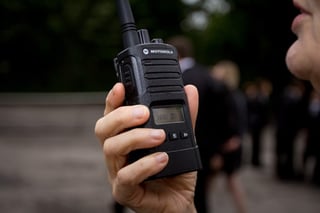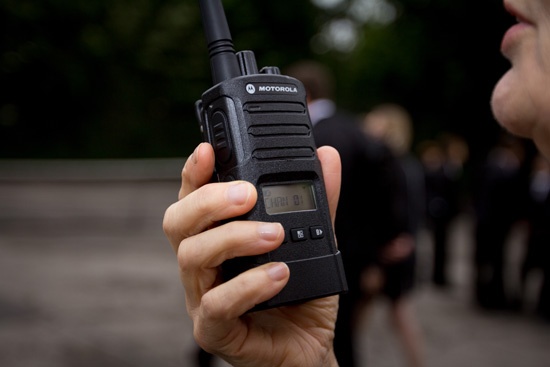Two-way radios have come a long way since their first use in public safety decades ago, and with wireless communications technology  evolving more rapidly all the time, it’s exciting to think about where radios will be even one year from now.
evolving more rapidly all the time, it’s exciting to think about where radios will be even one year from now.
Interoperability and convergence continue to drive the biggest trends for two-way radios, and with more industry-specific functionality being offered all the time, you can imagine that even more kinds of users will embrace two-way radios over smartphones or other devices.
Peering into our crystal ball, here are some educated guesses about where two-way radios will be one year from now.
Even more interoperable
Already, technology like Motorola’s WAVE platform is connecting two-way radios with disparate devices and networks like never before, and there’s even more potential for growth. WAVE allows users to instantly connect via push-to-talk (PTT) whether they’re on a computer, radio, rugged handheld, smartphone, tablet or other communications device.
While the WAVE Mobile Communicator currently supports the Android and iOS platforms, plans have been under way for a Blackberry version as well, just one way the technology will continue to grow.
Closer to LTE/LMR convergence
Convergence of the LTE, or cellular networks, and LMR (land mobile radios) has been trending for years, and it’s no longer a question of if but when. In the next year, we’ll have more data and results from convergence pilots that have been conducted across the country and from devices that have been built to bridge the gap.
While true convergence and interoperability are certainly longer than one year away, industry experts agree that we aren’t too far away from cell phones with apps that operate like two-way radios and radios with built-in cellular networks.
In more users’ hands
Two-way radios are already a lifeline for public safety agencies, private security companies, campuses, warehouses, hospitals, factories and a host of other fields and industries. As more people become aware of why two-way radios are better than cell phones not just for emergencies but for everyday communications, even more industries will make the switch. And two-way radio manufacturers will continue to respond with industry-specific apps and solutions.
Some examples of the kind of users who will benefit from growth in the use of two-way radios:
- K-12 school districts: administrators, transportation officials, facilities staff and teachers can remain in constant contact with each other and emergency responders.
- Retail operations: cashiers or floor sales associates can instantly contact back-room workers to check for sizes or inventory in real-time during transactions.
- Conference and event operators: when quickly navigating the floor of a giant convention hall or event facility just isn’t feasible.
- Consumers engaged in off-the-beaten-path sports and activities: outdoor recreation retailer REI offers customers a wealth of information on using two-way radios to keep in touch while hiking or skiing, or to tap into the National Oceanic and Atmospheric Administration (NOAA) weather band stations to check on local forecasts and conditions.



